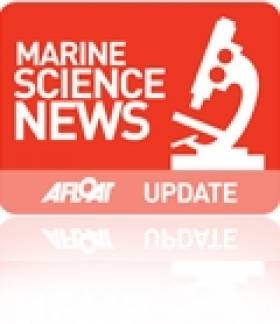Displaying items by tag: Clare Local Development Company
IWDG Secures 75% Funding for Celtic Mist Refit
#TALL SHIPS - The Irish Whale and Dolphin Group (IWDG) has secured three-quarters of the funding it required to refit its research vessel Celtic Mist.
According to The Irish Times, the Clare Local Development Company has approved the allocation of a €48,000 grant towards the refurbishment of the ketch.
The work will be carried out by Cathal Blunnie and several sub-contractors, and involves stripping down the main cabin and removing the bath and shower to increase space for crew berths.
While the ship's clock will be retained, the ship’s wheel in the main cabin will be removed and presented to the Haughey family as a gesture of appreciation.
As previously reported on Afloat.ie, the 52-foot yacht - which was gifted by the Haughey family to the IWDG to assist in its marine wildlife conservation work - entered dry dock last November in preparation for the refit work, after relocating to its new berth at Kilrush, Co Clare in July.
This followed its last jaunt at sea in its former guise, completing a leg of the Tall Ships Races from Waterford to Greenock in Scotland.
The cost of refurbishing the yacht for research and training purposes is expected to top €60,000, with an annual running cost of some €20,000, for which the IWDG is seeking ongoing financial assistance.
The group aims to get the Celtic Mist back at sea before the summer.
Celtic Mist Needs Funds for Refit
The Irish Whale and Dolphin Group (IWDG) has published a notice for its plans to refit the yacht Celtic Mist as a research vessel.
As previously reported on Afloat.ie, Celtic Mist was gifted to the IWDG by the Haughey family to help the group in its marine wildlife conservation work.
Under its new ownership, it completed a leg of this year's Tall Ships Race and found a new home at a sponsored berth at Kilrush, Co Clare.
Currently the IWDG is applying to the Clare Local Development Company for LEADER funding towards the refit.
IWDG co-ordinator Dr Simon Berrow said: "We are eligible for 75% funding but need to provide 25% funding ourselves. We estimate this to be in the region of €12,500.
"Celtic Mist has already cost IWDG around €5,000-7,500 so we must start a fundraising campaign to cover these and other costs."
Anyone who wishes to contribute to the fundraising campaign can contact the IWDG at [email protected]. All donations above €250 are tax deductable.































































